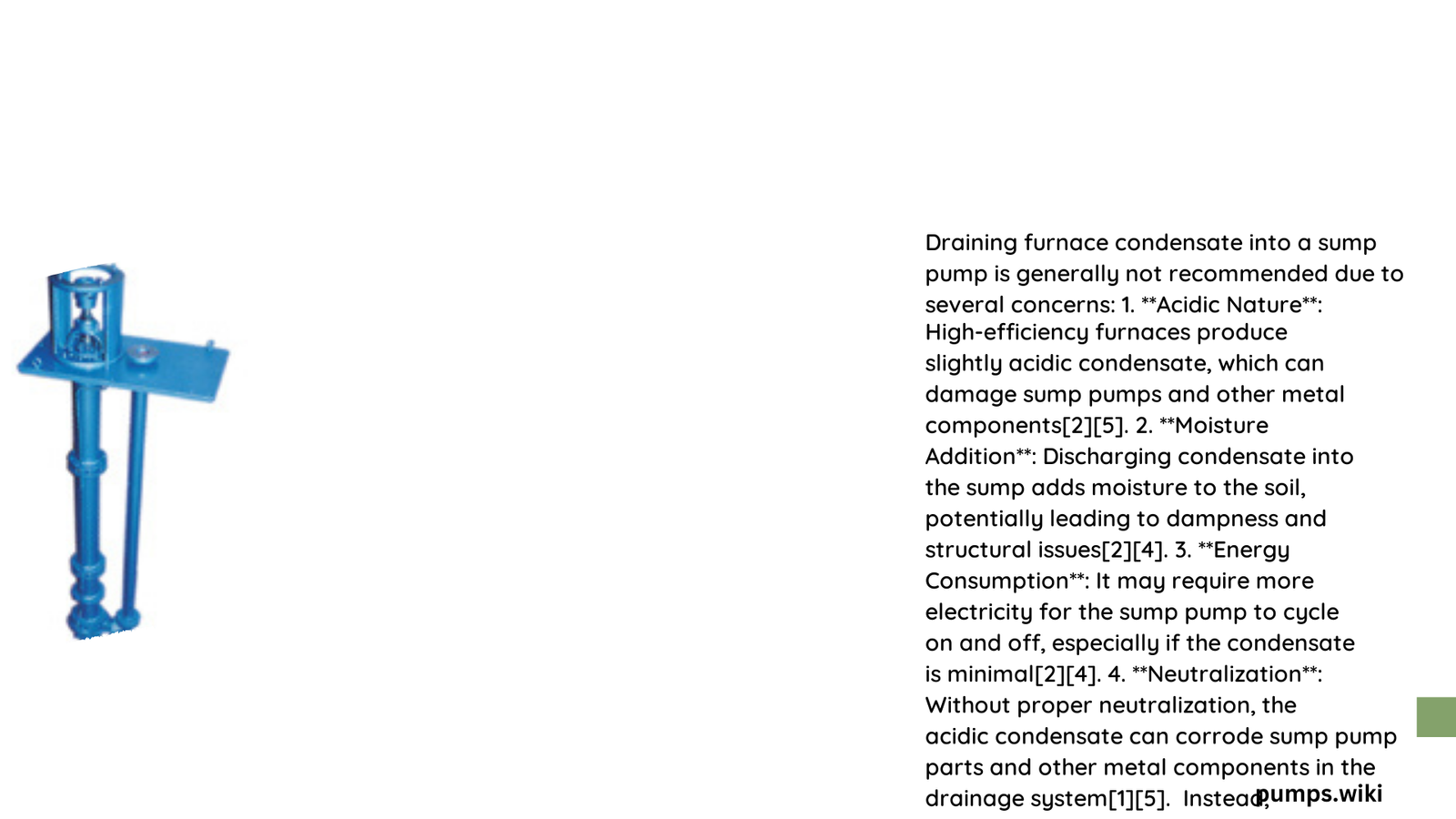Homeowners with high-efficiency furnaces often face the challenge of managing condensate water effectively. Connecting a furnace condensate drain to a sump pump provides an efficient solution for water disposal, preventing potential moisture-related issues in basements and mechanical spaces. This comprehensive guide explores the intricate process of installing, maintaining, and optimizing your furnace condensate drainage system.
Why Connect Furnace Condensate Drain to Sump Pump?
Connecting a furnace condensate drain to a sump pump offers several strategic advantages:
- Efficient Water Management: Redirects condensate water safely
- Prevents Moisture Accumulation: Reduces potential water damage risks
- Cost-Effective Solution: Utilizes existing infrastructure
- Minimal Infrastructure Modifications: Simple installation process
What Materials Are Required for Installation?

| Material | Purpose | Recommended Specification |
|---|---|---|
| PVC Drain Line | Condensate Transportation | 1/2″ or 3/4″ diameter |
| Condensate Pump | Water Removal | Minimum 10-20 GPH capacity |
| Check Valve | Backflow Prevention | Appropriate size for drain line |
| Electrical Connectors | Pump Power Supply | Match pump voltage requirements |
How to Install Furnace Condensate Drain to Sump Pump?
Step 1: Assess Drainage Requirements
Before installation, evaluate these critical factors:
– Furnace condensate volume
– Distance to sump pit
– Vertical lift requirements
– Local building code regulations
Step 2: Select Appropriate Condensate Pump
Considerations for pump selection:
1. Verify pump capacity matches furnace condensate production
2. Check vertical lift capabilities
3. Ensure compatibility with existing drainage infrastructure
4. Confirm electrical requirements
Step 3: Prepare Drainage Path
Detailed installation steps:
– Measure and cut drain lines precisely
– Ensure proper slope for gravity-assisted flow
– Install check valve to prevent backflow
– Secure all connections tightly
Step 4: Connect to Sump Pit
Critical connection guidelines:
– Position discharge line above water level
– Maintain minimum 2-inch air gap
– Secure connections with appropriate fittings
– Test system functionality before final commissioning
What Maintenance Protocols Ensure Optimal Performance?
Regular Inspection Checklist
- Examine drain lines for blockages
- Test pump functionality quarterly
- Clean condensate pump reservoir
- Verify check valve operation
- Monitor system for unusual sounds or behaviors
Potential Troubleshooting Scenarios
Common Issues and Solutions:
– Blockage: Use compressed air or plumbing snake
– Pump Failure: Check electrical connections
– Excessive Condensate: Verify furnace efficiency
– Corrosion: Install condensate neutralizer
What Are Potential Disposal Alternatives?
- Direct Sump Pit Drainage
- Exterior Ground Discharge
- Neutralization Before Disposal
- Municipal Sewer Connection
Professional Recommendations
- Consult HVAC professional for complex installations
- Verify local building code compliance
- Consider professional annual system inspection
- Invest in high-quality components
Cost Considerations
Estimated installation costs:
– DIY Installation: $100 – $300
– Professional Installation: $300 – $750
– Additional Neutralization Equipment: $50 – $200
Safety Precautions
- Always disconnect power before working
- Use appropriate personal protective equipment
- Follow manufacturer’s installation guidelines
- Ensure proper electrical grounding
Conclusion
Connecting a furnace condensate drain to a sump pump requires careful planning, precise execution, and ongoing maintenance. By following these comprehensive guidelines, homeowners can effectively manage condensate water, protect their property, and maintain optimal HVAC system performance.
